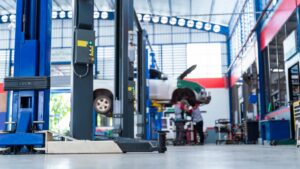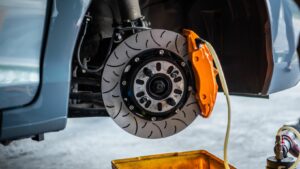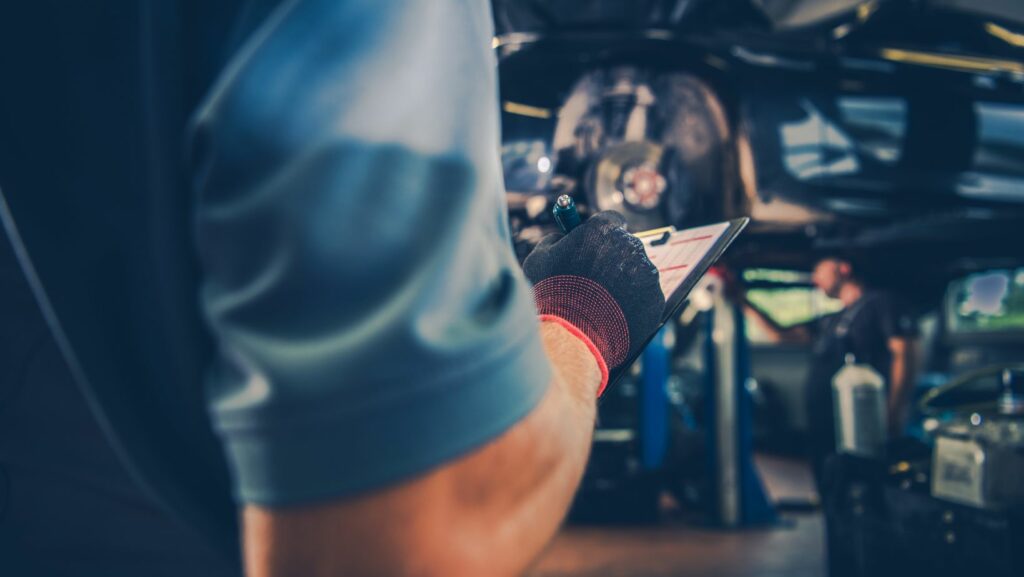DIY Car Maintenance
- Cost Efficiency: DIY car maintenance saves money by eliminating labor costs and service center fees, allowing car owners to perform essential tasks like oil changes and tire rotations themselves.
- Enhanced Knowledge: Engaging in maintenance tasks helps car owners understand their vehicle better, enabling early detection of potential issues and boosting confidence in handling car care.
- Flexible Scheduling: Completing maintenance tasks at home offers convenience and flexibility, allowing owners to work at their own pace without long wait times at auto shops.
- Basic Tools Required: Many DIY car maintenance tasks can be accomplished with minimal tools, such as a mechanics tool set, jack stands, and a torque wrench, making it accessible for beginners.
- Safety and Assured Performance: Regular maintenance increases vehicle safety and enhances performance, helping to ensure a smoother ride and prolong the vehicle’s lifespan.
- Busting Common Myths: Many misconceptions surrounding DIY car maintenance, such as complexity and warranty concerns, can be dispelled, making it clear that anyone can learn and perform these tasks effectively.

Car maintenance can seem daunting, but with a little know-how, anyone can tackle it. DIY car maintenance not only saves money but also empowers individuals to take control of their vehicle’s health. From changing the oil to rotating tires, understanding basic upkeep can extend a car’s lifespan and enhance performance.
With the right tools and guidance, even novice car owners can learn essential skills. This article will explore practical tips and easy-to-follow steps for maintaining a vehicle at home. Whether it’s checking fluid levels or replacing air filters, these DIY tasks can lead to a smoother ride and greater peace of mind on the road.
Understanding DIY Car Maintenance
DIY car maintenance offers car owners a chance to learn about their vehicle while saving money. Engaging in routine upkeep tasks contributes to a vehicle’s efficiency and lifespan.
Benefits of DIY Car Maintenance
- Cost Savings: Performing maintenance tasks like oil changes and filter replacements lowers labor costs associated with professional services. Home maintenance eliminates service center fees.
- Enhanced Knowledge: Owners gain a better understanding of their vehicle’s systems, enabling them to recognize potential issues early. Increased knowledge promotes confidence in handling car care.
- Customization: DIY maintenance allows for personalized care of vehicles, leading to tailored solutions that cater to specific needs and driving conditions.
- Convenience: Completing maintenance tasks at home offers flexibility in scheduling. Owners work at their own pace without the wait times characteristic of auto shops.
- Safety Assurance: Regularly inspecting and maintaining a car increases safety on the road. Understanding vehicle condition fosters proactive measures to avoid breakdowns or accidents.
- Myth 1: It’s Too Complicated: Basic maintenance tasks are straightforward and accessible. Many online resources provide step-by-step instructions suited for beginners.
- Myth 2: DIY Maintenance Voids Warranties: Performing maintenance in compliance with manufacturer guidelines typically does not void warranties. Documentation of tasks performed can provide necessary proof.
- Myth 3: Special Tools Are Required: Many maintenance activities require minimal tools. Basic equipment like wrenches and screwdrivers suffices for numerous tasks.
- Myth 4: It Takes Too Much Time: Many minor maintenance tasks can be completed within a short time frame. Prioritizing regularly scheduled maintenance reduces time spent on repairs.
- Myth 5: It’s Only for Professionals: Anyone, regardless of technical background, can learn DIY car maintenance. Many novices successfully complete tasks with proper guidance and practice.
Essential Tools for DIY Car Maintenance
Having the right tools enhances efficiency and ensures successful DIY car maintenance. Essential tools fall into categories, including general tool kits and safety equipment.
Recommended Tool Kits
- Mechanics Tool Set: A comprehensive mechanics tool set includes various sockets, wrenches, and pliers, providing versatility for different tasks.
- Torque Wrench: A torque wrench guarantees accurate tightening of bolts and nuts to manufacturer specifications, preventing damage to components.
- Oil Filter Wrench: An oil filter wrench simplifies the removal of stubborn oil filters, making oil changes easier and cleaner.
- Jack and Jack Stands: A hydraulic jack and jack stands are necessary for safely lifting the vehicle, allowing access to undercarriage components.
- Multimeter: A multimeter aids in diagnosing electrical issues, measuring voltage, current, and resistance within the vehicle’s electrical system.
- Safety Glasses: Safety glasses protect the eyes from debris and chemicals, ensuring safety during maintenance tasks.
- Gloves: Nitrile or latex gloves guard against skin irritation and contamination while handling fluids and other materials.
- First Aid Kit: A basic first aid kit addresses minor injuries, promoting safety and preparedness during DIY car work.
- Fire Extinguisher: A car-safe fire extinguisher is crucial for preventing and mitigating fire hazards when working on vehicles.
- Fume Mask: A fume mask protects against inhaling harmful chemicals and fumes, especially during tasks involving fuel or solvents.
Basic DIY Car Maintenance Tasks
Basic DIY car maintenance tasks enhance vehicle performance and longevity. Regular attention to these tasks can save money and extend the life of a vehicle.
Oil Changes
Oil changes maintain engine performance and efficiency. Mechanics recommend changing oil every 3,000 to 5,000 miles, depending on the vehicle’s requirements. He or she should gather essential materials, including new oil, an oil filter, a wrench, and an oil catch pan.
- Prepare the Vehicle: Park on level ground, engage the parking brake, and allow the engine to cool.
- Drain Old Oil: Remove the oil drain plug using a wrench and let old oil flow into an oil catch pan.
- Replace Oil Filter: Use an oil filter wrench to remove the old filter. Apply a thin layer of new oil to the rubber gasket of the new filter, then install it securely.
- Add New Oil: Replace the drain plug and pour the new oil into the engine using a funnel. Check the owner’s manual for the correct oil capacity and type.
- Check Oil Level: After adding oil, run the engine for a few minutes, then check the oil level using the dipstick. Add more oil if necessary.
Tire Rotation
Tire rotation enhances tire longevity and ensures even wear. Mechanics recommend rotating tires every 5,000 to 8,000 miles.
- Gather Tools: Obtain a hydraulic jack, jack stands, a lug wrench, and a torque wrench.
- Lift Vehicle: Use the hydraulic jack to lift the vehicle and place it securely on jack stands.
- Remove Tires: Loosen and remove lug nuts on each wheel with the lug wrench. Keep lug nuts in a safe place to avoid loss.
- Rotate Tires: Move the front tires to the rear and the rear tires to the front. Follow the recommended rotation pattern depending on whether the tires are directional or non-directional.
- Reattach Tires: Place the tires back onto the hubs and hand-tighten the lug nuts.
- Lower Vehicle: Carefully lower the vehicle from the jack stands and tighten lug nuts to the manufacturer’s specified torque using a torque wrench.
Advanced DIY Car Maintenance Techniques
Advanced DIY car maintenance techniques can enhance vehicle performance and ensure safety. Covering areas such as brake system maintenance and electrical system troubleshooting, these practices equip car owners with the skills to manage more complex tasks effectively.
Brake System Maintenance
Brake system maintenance is crucial for vehicle safety. Inspecting brake pads for wear can reveal if replacement is necessary; pads should typically be replaced every 30,000 to 70,000 miles. Checking brake fluid levels should occur regularly; the fluid should remain between the minimum and maximum marks on the reservoir. Flushing the brake fluid every two years helps maintain optimal performance by removing contaminants.
To replace brake pads, gather tools like a socket set, a C-clamp to compress the caliper, and a brake pad spreader. Remove the wheel, then unbolt the caliper. Replace the old pads with new ones, ensuring they are seated correctly. Reattach the caliper, tighten the bolts, and reinstall the wheel. This process can improve braking efficiency significantly.
Electrical System Troubleshooting

Electrical system troubleshooting involves diagnosing issues such as dead batteries, blown fuses, and faulty wiring. Starting with the battery, regular inspections can identify corrosion on terminals.Clean corroded terminals with a wire brush and ensure tight connections. Testing the battery voltage using a multimeter helps determine its health; a voltage reading below 12.4 volts indicates a weak battery that may require replacement.
For blown fuses, locate the fuse box and check the fuse corresponding to the malfunctioning component. Replace any faulty fuses with identical amperage to maintain system integrity. For more complex issues, a wiring diagram can aid in tracing problematic areas, allowing for targeted repairs. Addressing electrical problems promptly prevents further complications and maintains vehicle reliability.
Personal Satisfaction in Vehicle Ownership
Embracing DIY car maintenance empowers vehicle owners to take control of their automotive care. By learning to perform essential tasks like oil changes and tire rotations, they not only save money but also gain valuable insights into their vehicle’s workings.
With the right tools and a bit of confidence, anyone can tackle maintenance at home. This hands-on approach fosters a deeper connection with the vehicle while ensuring it runs smoothly and efficiently.
Ultimately, the journey into DIY car maintenance is about more than just saving costs; it’s about enhancing safety, performance, and personal satisfaction in vehicle ownership.

